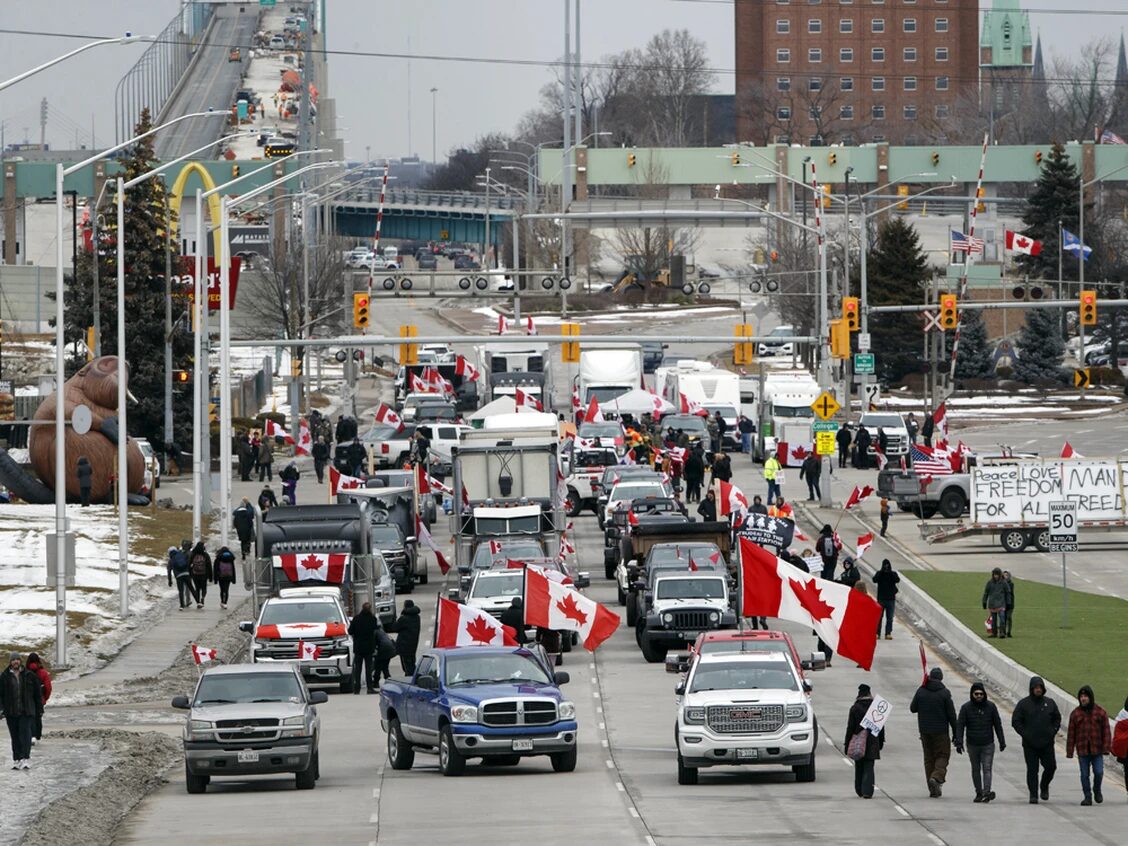
Canada's spy agency warned the federal government invoking the Emergencies Act could further radicalize Canadians engaged in convoy protests, and push some towards violence.
The information is contained in an undated report from the Canadian Security Intelligence Service (CSIS) that was presented at the Emergencies Act (EA) inquiry on Monday. It surfaced during Windsor Mayor Drew Dilkens's testimony about the blockade of the Ambassador Bridge last winter, part of several protests against pandemic restrictions.
The document reveals that the day before the Trudeau government invoked the act on Feb. 14 in response to the Freedom Convoy protests across the country, CSIS warned the government that it could have significant and far-reaching collateral consequences.
"CSIS advised that the implementation of the EA would likely galvanize the anti-government narratives within the convoy and further the radicalization of some towards violence," reads the document. It adds that the phenomenon was already noticed when Ontario declared a provincial state of emergency days earlier.
The document also says CSIS warned that invoking the act could also undermine confidence in government and push some with "extreme" views to violence.
"CSIS advised that the invocation of the EA by the federal government would likely leads to the dispersing of the convoy within Ottawa but would likely increase the number of Canadians who hold extreme anti-government views and push some towards the belief that violence is the only solution to what they perceive as a broken system and government," reads the document.
Canada's spy agency reiterated its concerns about a potential increase in violence during an undated meeting after the act was invoked on Feb. 14.
Dilkens said he saw value in the invocation of the act. He said he feared convoy protesters would return to the Ambassador Bridge and set up another blockade after police cleared them out without the help of the significant powers of act.
He said the economic damage from the closure of the bridge to the U.S. did considerable damage.
"This was in my mind and will remain until I'm long gone, a national economic emergency and there is a direct correlation to a national economic emergency and I would submit to a national security issue."
Brendan Miller, a lawyer representing Ottawa convoy protesters, presented a CSIS assessment of the protests to Dilkens in response to those comments.
The assessment includes notes of what the agency was prepared to tell cabinet during the protest, though the note indicated they couldn't reveal exactly what they said in cabinet.
As of Feb. 3, CSIS assessed there were no indicators that ideologically motivated violated extremism (IVME) actors were prepared to engage in violence.
The day before cabinet ultimately invoked the act, the agency also warned cabinet that while invoking the act could clear the Ottawa protest, there would be consequences.
The CSIS document also reveals that Canada's Integrated Terrorism Assessment Centre (ITAC) warned government in December 2021 of the risks posed by the ideologically motivated violent extremism-related threats "that later surfaced in the context of the 2022 Freedom Convoy."
In Dec. 2021, ITAC established for the first time that an "IMVE attack was more likely in Canada in the next 12 months than a Religiously Motivated Violent Extremism attack." That's a significant change from a previous assessment in 2017 that IMVE's "did not demonstrate" interest in conducting terrorist activities.
The document also reveals ITAC's concern with the "apparent normalization" of violent rhetoric and threats, namely towards politicians and public figures, "as a means to express dissent."



It's more than simply "perception". The governmental system in Canada, among others, is broken. Our governments no longer serve the citizens, they serve the gods of money and power.